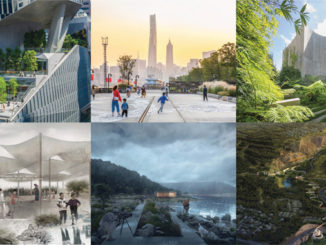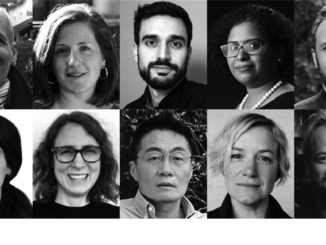Shortlist showcases the of best in landscape architecture, design, planning and management ahead of 2018 Awards ceremony
The Landscape Institute is pleased to announce the shortlist of finalists for the annual Landscape Institute Awards 2018. The projects showcase the breadth of exceptional work of the many different types of landscape professionals, including landscape designers, managers, planners and researchers and in particular the power landscape has to impact on people’s lives.
Over 160 entries were received from around the world and winners will be announced at the Awards Ceremony on Thursday 22 November at The Brewery in London, at an event recognising and celebrating excellence, innovation and creativity by practitioners working in both the natural and built-environments. New York Times best-selling author and journalist Florence Williams will be the keynote speaker and the awards will be compered by broadcast journalist and BBC London radio contributor, Ebs Akintade. This event aims to highlight the innovative work by the landscape profession across the UK and internationally.
Dan Cook, CEO of the Landscape Institute, said: “The Landscape Institute’s Awards are designed to really push the boundaries of landscape design, and bring together professionals from the entire sector to collaborate and inspire. They demonstrate what is unique about the profession, which at its heart is focussed in creating and managing places that benefit people, place and nature. Interestingly one of the common themes this year across many entries is the importance placed on community engagement and is symbolic of the values held by the next generation of the profession.”
Adam White, President of the Landscape Institute said: “We have had an impressive number of entries this year, of an incredibly high calibre, totalling 163 applications. The shortlisted projects range from small but creative UK projects, to impressively innovative international designs. With 21 different categories in the Awards, there is obviously great diversity in the approaches demonstrated and as a landscape design professional myself, it is hugely satisfying to see the contrasts in the design, planning and management across the 36 projects that have made it to this year’s shortlist and I wish them all of the finalists the very best of luck at the Awards ceremony.”
Mathew Haslam, Managing Director of Hardscape, headline sponsor of the Awards, comments: “We’re proud to show our continued support for the Landscape Institute as the headline sponsor of this year’s awards event. We’re really looking forward to the awards ceremony, which promises to be a great event, allowing us all to take a step back and celebrate some of the most outstanding work the industry has delivered over the past year.”
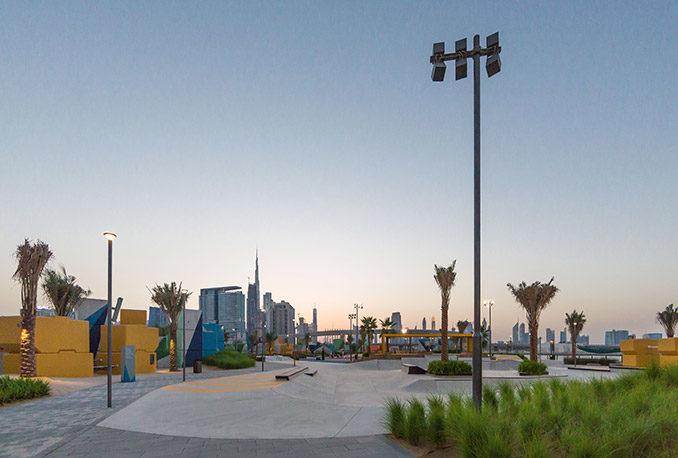
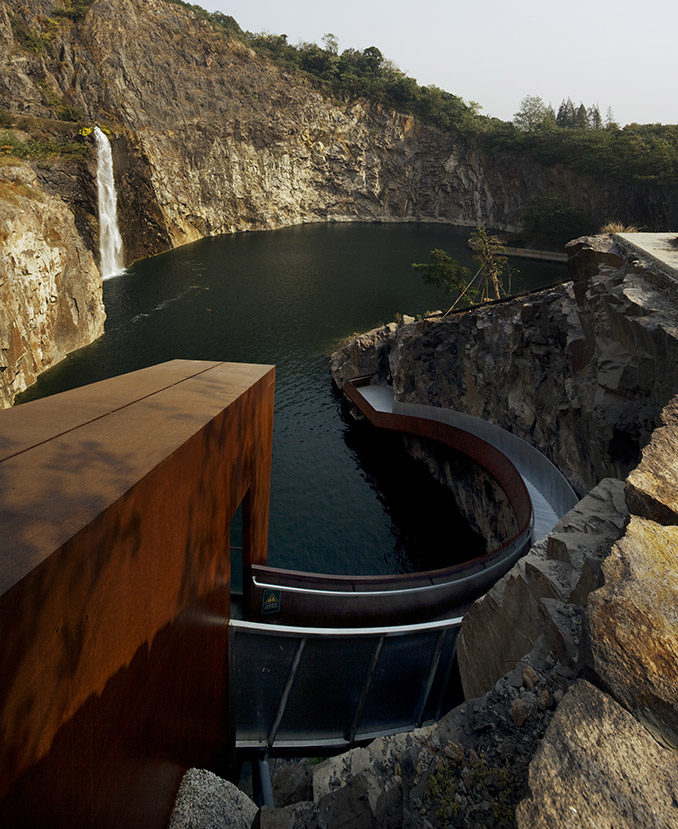
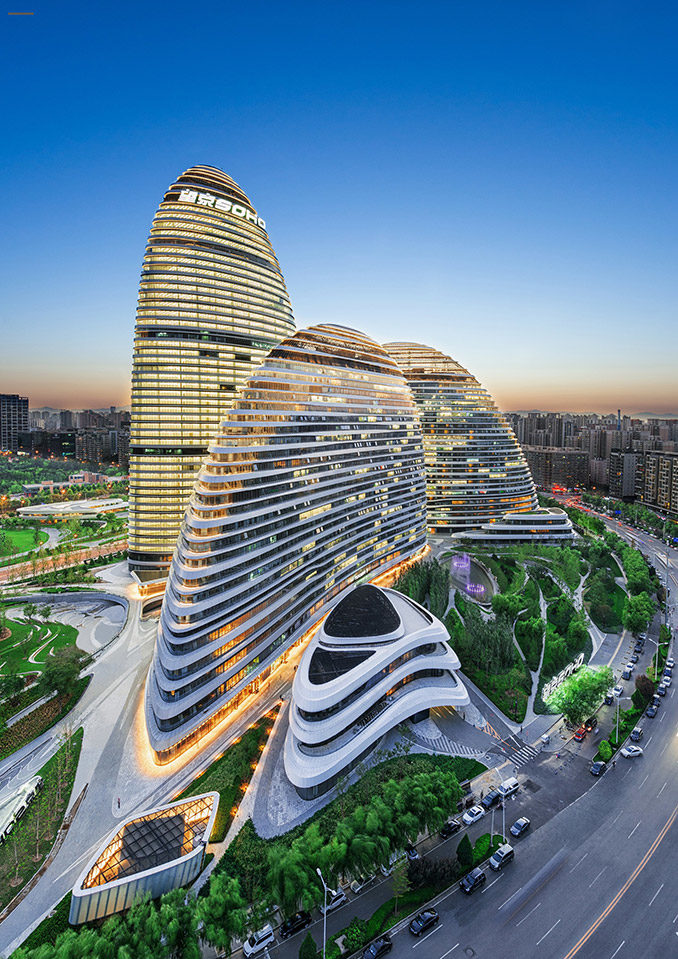
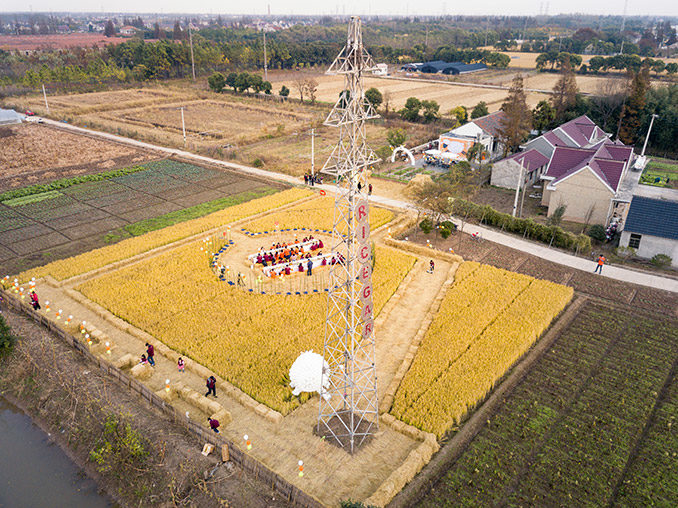
Shortlist of finalists:
Mill Lane and De Montfort University Public Realm, AECOM
The new design of the main pedestrian spine running through De Montfort University in Leicester promotes walking and cycling, and the rain gardens support ecology and managing water.
Neighbourhood Planning Support Services Heritage and Character Assessment, AECOM
Since 2015, AECOM have provided a national programme of technical support to groups engaged in preparing neighbourhood plans. This project draws specifically on the delivery of over 50 Heritage and Character Assessments, which apply the best of local landscape planning practice.
Quarry Garden in Shanghai Chenshan Botanical Garden, Beijing Tsinghua Tongheng Urban Planning & Design Institute
Inspired by the concept of “Taoyuan” (an ideal paradigm of East Asian natural landscape), the quarry creates a series of attractions, re-establishing the connection between human beings and natural wasteland which is integrated with the adjacent botanical garden.
Connecting Burton and the Trent Washlands, A New Vision, Black and Veatch Ltd
Combining Ecosystems Services Valuations, and more traditional heritage and landscape techniques, including hand-drawn visualisations, to connect Burton to the Trent Washlands in Staffordshire.
Seething Lane Gardens, Ten Trinity Square, Capita Lovejoy
Facilitating the reuse of the listed Ten Trinity Square in London, which was at risk due to inoccupancy, a pocket park was created that balances the needs of people, environment, heritage and townscape.
Northstowe Healthy Living and Youth & Play Strategy, Chris Blandford Associates
Delivered in three phases, Northstowe in Cambridgeshire will eventually provide 10,000 new homes for around 25,000 people and provides guidance on how to embed healthy living and play into the design of green infrastructure.
South Gardens, Elephant Park, Churchman Landscape Architects
This design provides a case study of the residential landscape as an urban sanctuary in London, which places the community, wellness and ecology at its hear, with communal courtyards and the incorporation of green roofs.
Residential Regeneration at Poole Park Road, Barne Barton, Plymouth, Clifton Emery Design
Plans are underway to transform the site of the largest naval estate in the UK, introducing a mixture of flats, houses and community spaces that create sustainable and vibrant places to live.
Rice Garden in Shanghai, China, Department of Landscape Architecture, Tongji University
This temporary agricultural garden is constructed on the same rice field every year while maintaining the land’s productivity. The design changes annually, making it an ongoing experience, which if monitored each season, could help to better understand the interaction of people with different open spaces.
The Block, desert INK/Desert Group
The Block provides a great example of how site-found waste materials can be successfully used to create both character and function within a public landscape in Dubai.
Gunnersbury Park, Ealing Council
A practical hands-on approach and strong community outreach has restored the 18th century park’s listed structures and tree lines in West London.
Wangjing SOHO Parks – Creating A New Green Urban Hub, Ecoland Planning and Design Corporate
This park is a backyard oasis in which people can interact with each other and with nature, making it a pinnacle destination for local workers and residents in the booming Wangjing district of Beijing.
Royal Edinburgh Hospital, erz
This project provides accessible, therapeutic spaces throughout the campus and combines landscape and architecture to provide social and health benefits through access to high-quality landscape in Scotland’s capital city.
Maritime Streets, Farrer Huxley Associates
Barrow in Furness has a rich industrial heritage, but the decline in traditional industry has resulted in a degraded landscape around Maritime Streets. The brief was to improve the public realm, creating a landscape that would that kick-start economic and social growth.
Piece Hall, Gillespies LLP
Built in 1779, the Grade I listed Piece Hall in Halifax, in Yorkshire, is the sole survivor of the great 18th century northern cloth halls. The transformation project was undertaken as a sensitive restoration and re-use of the courtyard, after it escaped demolition by a single vote in 1972.
Forest of Imagination, Grant Associates
A temporary annual transformation of a public space in Bath made from borrowed, found or recycled materials as a way of highlighting the importance of sustainability.
Bushey New Cemetery, J & L Gibbons
The design aimed to alter the perception of the building cluster by seamlessly integrating new prayer halls, a mortuary, parking and burial space into the London landscape.
London Borough of Barking and Dagenham Parks and Open Spaces Strategy and Corporate Natural Capital Accounts, Jon Sheaff and Associates
Aiming to develop new parks and open spaces strategy for this London borough, the project recognised the significant challenges faced by the council and the opportunities presented by good-quality parks in delivering positive outcomes for communities and for the borough as a whole.
Landscape Architecture & Environmental Sustainability, Joshua Zeunert
The book uses before, during and after imagery to communicate the temporal aspects of landscape architecture sustainability and the importance of process and time.
Thamesmead, Land Management Services
Over the next 20 to 30 years, it is anticipated that Thamesmead Estate in East London will be transformed, with a commitment by Peabody to invest an estimated £1bn in housing, green spaces, waterways and promoting economic prosperity.
Brompton Cemetery Conservation Project, LDA Design
The four-year, £6.2m ‘Parks for People’ restoration project has revealed hidden architectural gems, revitalising Benjamin Baud’s and J.C. Loudon’s original garden cemetery design in West London.
Aberfeldy phases 1 and 2, Levitt Bernstein
Providing more than 1,000 affordable new homes set around new green spaces and using pedestrian and cycle strategies to break down the barriers of the A13 and A12 highways in Highland Perthshire.
Eastfields, Levitt Bernstein
The concept in Mitcham in Surrey has been to turn the existing estate ‘inside out’, reallocating green space and reducing the current feeling of isolation expressed by residents.
Cassiobury Park, LUC
This park was the last surviving portion of the great country seat of the Earls of Essex. The project aimed to restore and reveal the lost character and features of this 380-year-old designed landscape, while also revitalising the ‘People’s Park’.
Landscape Sensitivity and Green Infrastructure Study for Leicester & Leicestershire, LUC
This project links landscape sensitivity and green infrastructure studies to provide weighty and robust evidence to allow the county and local planning authorities to be proactive rather than reactive in accommodating future development.
Beech Gardens and The High Walk, Barbican Estate, Nigel Dunnett Studio
By completely replanting the podium level at Beech Gardens and the High Walk in the Barbican Estate, this project aimed to create an exemplar of sustainable climate-adapted urban landscape planting.
The Dunbar Battery, Rankinfraser Landscape Architecture
Undertaking the regeneration of the battery, on Scotland’s south east coast, along with the creation of a new public gathering space to promote education and public art, while also conserving a listed building.
Bluegreen Liverpool, reShaped
Bluegreen built interventions to engage people through their own curiosity, creating talking points and inspiring action. Connections were developed during design workshops and walks, involving over 400 members of the public.
Exmoor’s Ambition, Rural Focus
Pre-empting the impact of Brexit on the future for food, farming and the environment, the project’s focus lies in incentivising all the public benefits of the countryside such as healthy food and soils, flourishing nature and enterprising businesses.
Environmental Improvement Project at Kranji Marshes, Stephen Caffyn Landscape Design
Promoting awareness of biodiversity through nature experiences, interpretive signage, environmental sculptural elements, this site is now home to more than 170 species of birds, including nationally-threatened species such as the grey-headed fish eagle in Singapore.
Learning Forest, Singapore Botanic Gardens, Stephen Caffyn Landscape Design
An educational rainforest experience in the heart of the city with canopy walkways, wetland boardwalks and stepping stones.
Met Science Park, Stride Treglown
In this Devonshire project the planting provides a habitat for wildlife using a planting palette of native grasses and willow, with a focus on pollinating insects and a symbiosis with planting.
Le Jardin Secret, Marrakech, Tom Stuart-Smith Ltd
This project divides the garden into two contrasting spaces, each representing a different version of heaven. One strictly follows garden-making principles in the Islamic tradition while the Exotic Garden has a contemporary character, with species drawn from Mediterranean regions.
Shadwell Estate, Turkington Martin
Creating a sense of identity for the whole London estate and to improve access to green space, by developing a ‘garden’ for the residents and providing a series of formal and informal social spaces.
Wandle Vistas, Untitled Practice Ltd and Fiona Fyfe Associates
Celebrating the under-represented qualities of Surrey’s Wandle Valley, from downland to delta and offering community-inspired legacy, including the training of local volunteers.
St Helen’s Moorish-stitch, Urban Wilderness
A garden for the Bloom! Festival in York, which celebrated 250 years of the Ancient Society of York Florists. The planting was inspired by the North York Moors with a modular ‘stitch’ pattern, referencing fashion design.
The Landscape Institute’s 2018 Awards take pace that The Brewery in London on Thursday 22 November 2018.
For tickets, visit: https://www.eventbrite.co.uk/e/2018-landscape-institute-awards-tickets-50531889241

